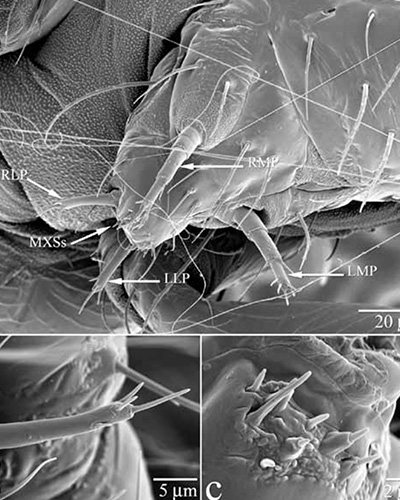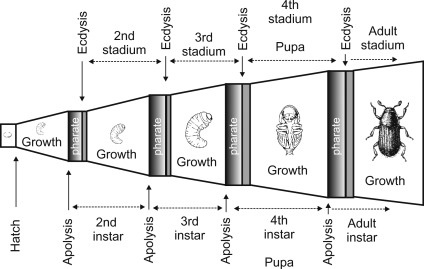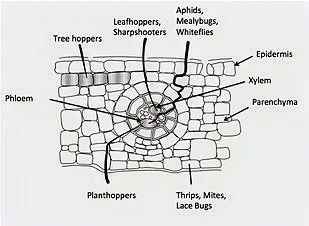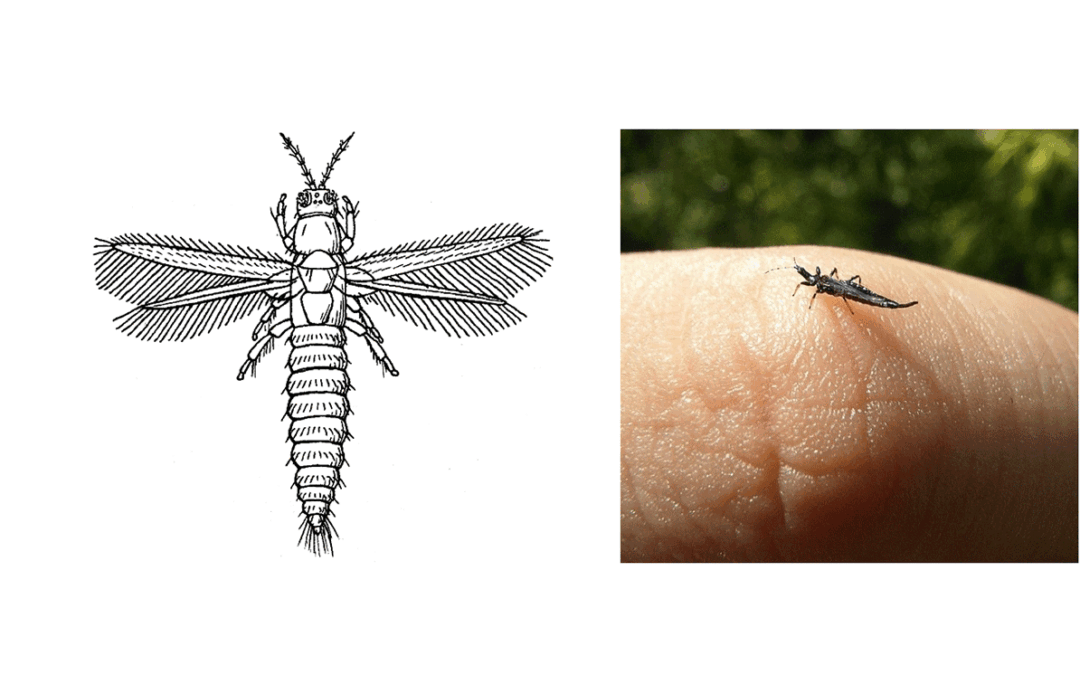Ross Tree is noticing a lot of Thrips this month. We arrive to service trees, but the homeowners also want us to look at insect damage on their grapes, roses, and other yard plants. We have even been asked to look at the damage to marijuana plants grown for personal use. Adult Thrips have long, slender bodies about 1/32 inches long with two pairs of wings.

They use asymmetrical mouthparts to scrape the leaf’s surface and extract fluids. The Onion Thrips (Thrips tabaci) and Western Flower Thrips (Frankliniella occidentalis) are native to Colorado, but it takes an entomologist using a microscope to tell them apart. Both are major pests for vegetables grown in the state.
Interesting Thrip Life History

Thrips have fascinating lifecycles. They are parthenogenic, which means that females can lay eggs without fertilization. After hatching, the wingless larvae tend to be transparent with white or yellow-orange coloring. Their digestive process is in full view. The larvae go through four instars, of which two are active feeding stages while the other two are inactive pre-pupa stages. An instar is a developmental stage in insects. They need to shed their exoskeletons to allow growth. Adults and first and second-feed-stage larvae will crawl around if disturbed.
Thrip Damages Plants Two Ways

Thrips feeding causes physical damage on leaves. These patches or streaks reduce plant growth and increases stress. Thrips also feed on flower buds, which can result in deformed flowers or buds that do not bloom. Thrips can cause the pigtails to grow on garden cucumbers. They also cause reduced bulb size in onions. Western Flower Thrips are vectors of the tomato spotted wilt virus and the impatiens necrotic spot virus. The tomato spotted wilt virus damages tomatoes, potatoes, peppers, eggplant, potato, lettuce, spinach, squash, and beans. Thrips are more problematic in vegetable and marijuana grow houses where there are few natural enemies.
Control
Biological – These juicy insects feed predatory mites, minute pirate bugs, nematodes, lacewings, ladybirds, and parasitoid wasps. Many of these predatory insects are available commercially and used in greenhouses.
Cultural – Many people throw fine mesh netting over their vegetables to protect them from Thrips.
Chemical – Thrips have become resistant to commonly used insecticides because the different life stages of the insect differ in their susceptibility to chemical controls. Most insecticides are effective at killing early larvae during the first and second instars, while only some are effective against adults. Spraying the insect eggs does not work since they are embedded inside leave tissues. Applications when the larvae are in their third and fourth instars are ineffective. Application timing is imperative for best results so do-it-selfers should read product labels carefully.
The Ross Tree offers tree watering, fertilization, and systemic injections to keep trees healthy and resistant to the tree pests and diseases. Click here to request tree service or call 303-871-9121 for an appointment. We are at your service.

